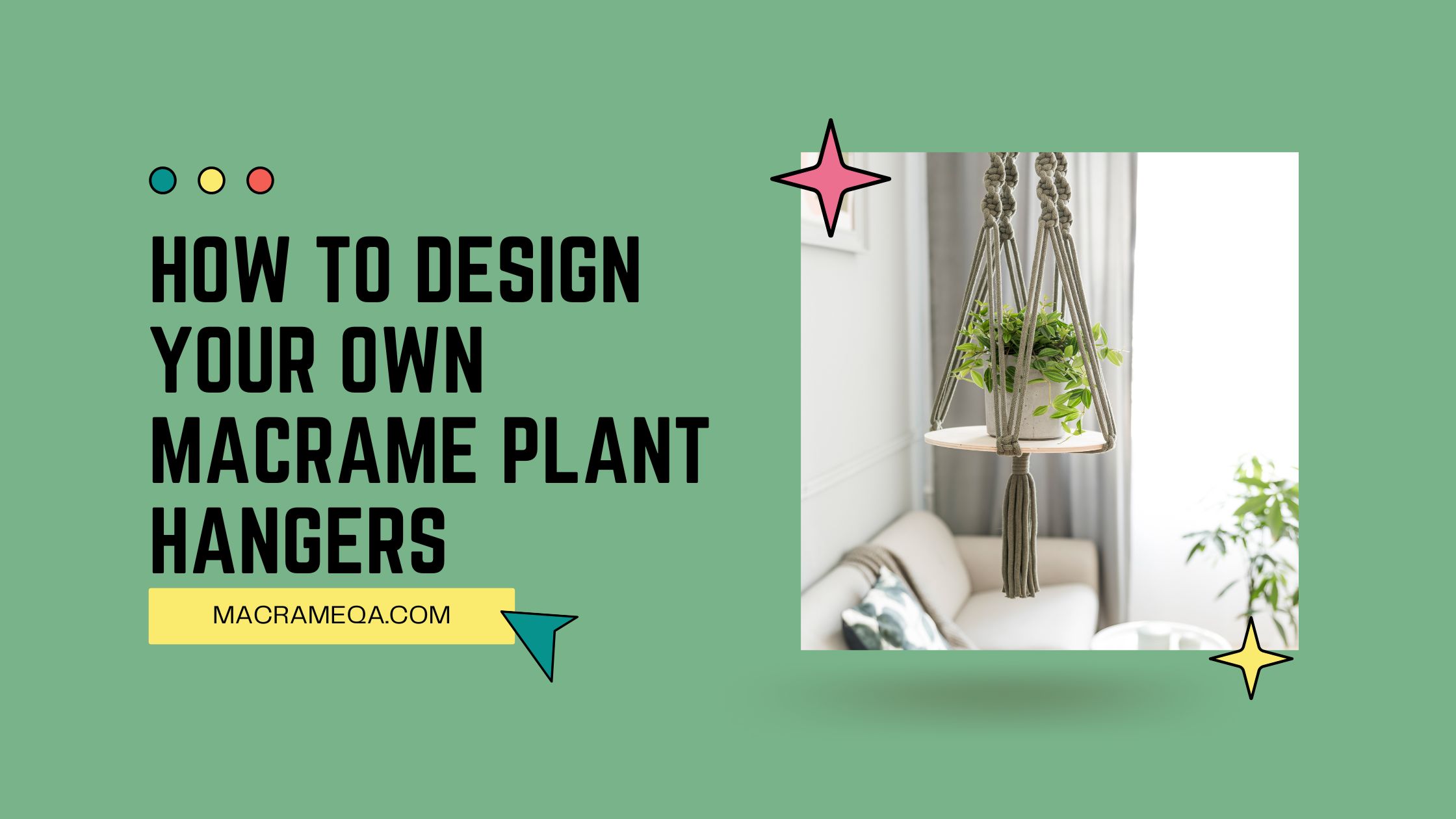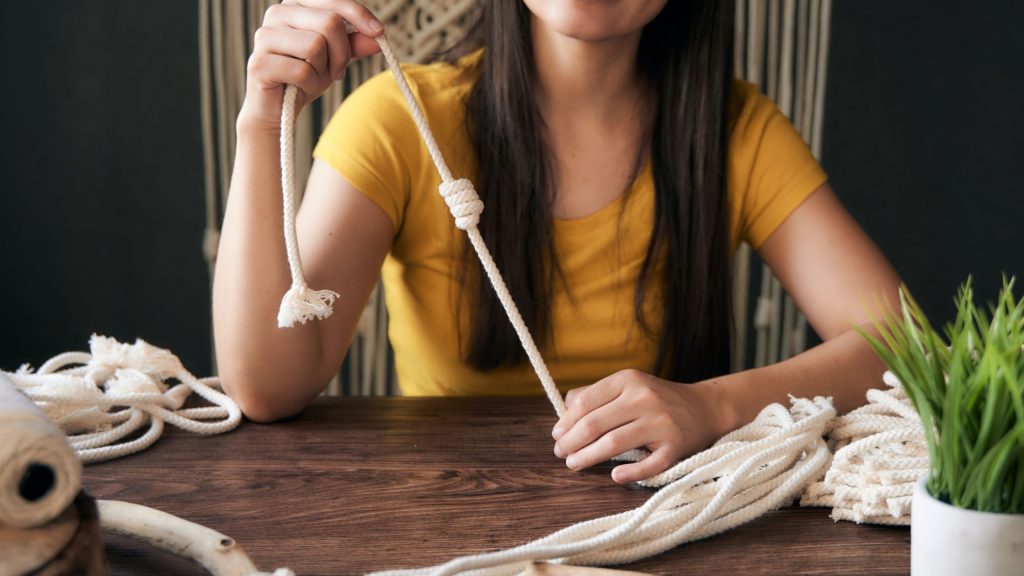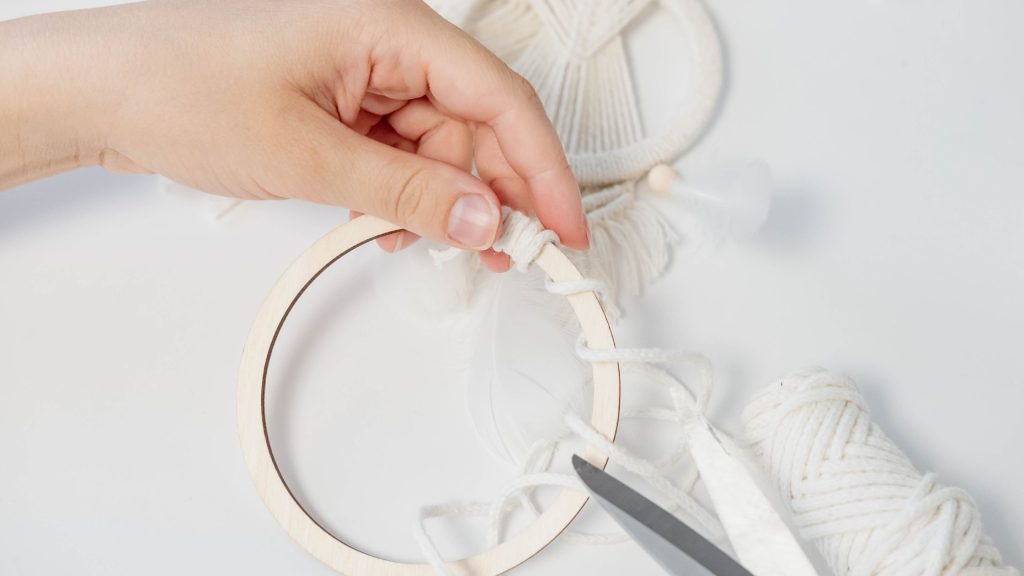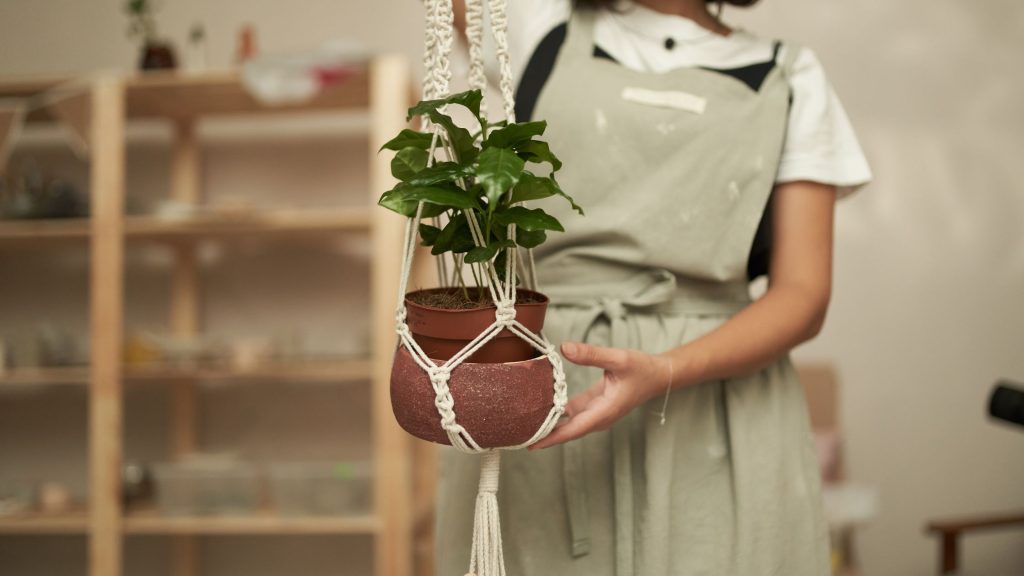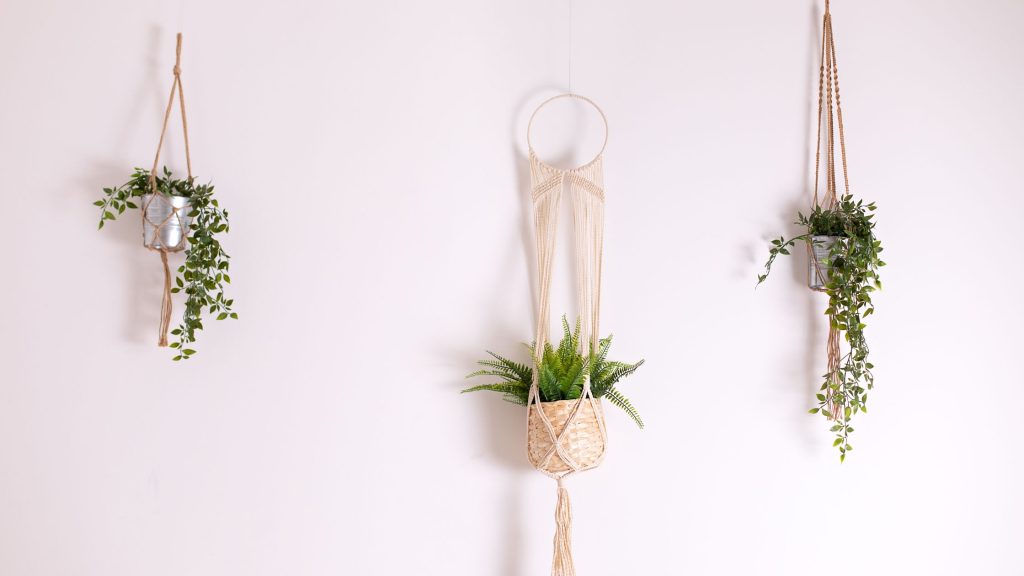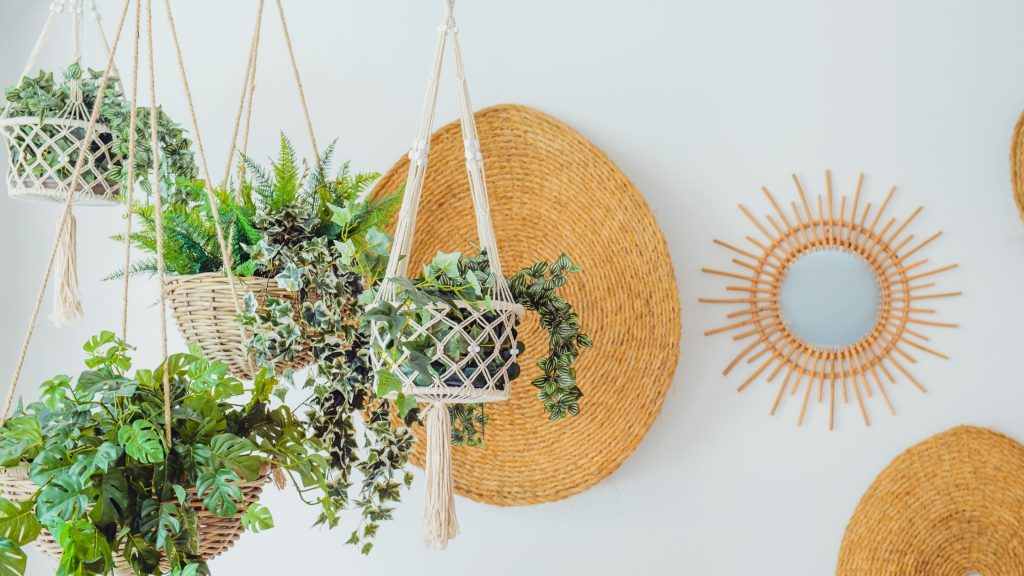Imagine transforming your space into a lush, green paradise with the help of your own handmade macrame plant hangers. Step into the world of creativity and learn how to design your own macrame plant hangers. In this article, you will discover the art of macrame, unravel the secrets to creating intricate knot patterns, and explore various design ideas that will elevate your indoor or outdoor gardening game. Get ready to unleash your inner artist and bring a touch of bohemian elegance to your surroundings with your very own macrame plant hangers.
Choosing the Right Materials
When designing your own macrame plant hangers, selecting the right materials is crucial. One of the first things to consider is the rope. Macrame rope comes in various types and thicknesses, so you’ll want to choose one that suits your desired aesthetic and the weight of your plants. Cotton rope is a popular choice for its softness and natural look, while nylon rope is more durable and weather-resistant.
In addition to the rope, you’ll also need to consider the strength and durability of the materials you choose. Macrame plant hangers typically need to support the weight of the plant and the planter, so it’s important to select materials that can handle the load. Make sure to choose a rope that is strong enough to hold the weight without stretching or breaking.
When it comes to choosing the right ring or hoop for your macrame plant hanger, there are a few options to consider. Metal rings are a classic choice, providing a sturdy base for your hanger. Wooden hoops can add a natural touch to your design, and plastic rings are lightweight and easy to work with. Consider the overall aesthetic you want to achieve and choose a ring or hoop that complements your vision.
Lastly, depending on your design and the specific techniques you plan to use, there may be other materials you’ll need. This could include beads for embellishments, wooden dowels for creating unique patterns, or even feathers or shells for added decoration. Think about the specific elements you want to incorporate into your macrame plant hanger and gather all the necessary materials before getting started.
Gathering the Necessary Tools
Before you dive into making your macrame plant hangers, it’s important to gather all the necessary tools. Having the right tools on hand will make the process much easier and ensure that your finished hangers turn out exactly as you envisioned.
First and foremost, you’ll need a pair of scissors or a craft knife. These will be essential for cutting the rope to the desired lengths and trimming any excess once your hanger is complete. Another helpful tool to have is a measuring tape or ruler. This will allow you to accurately measure the length of the rope and ensure consistency throughout your design.
A combing or brushing tool is also useful for straightening out the strands of rope and removing any knots or tangles. This will give your macrame plant hanger a polished, professional look. Additionally, you’ll need a clipboard or clipboard hanger to secure your project while you work on it. This will keep your hands free and make it easier to create the intricate knots.
While not necessary for every design, glue or tape can be useful for securing loose ends or adding extra reinforcement to your macrame plant hangers. Keep these optional tools on hand in case you need them during the construction process.
Learning Basic Macrame Knots
Before you can start designing your own macrame plant hangers, it’s important to familiarize yourself with some basic macrame knots. These knots will form the foundation of your hangers and allow you to create beautiful patterns and designs.
The square knot is one of the most common macrame knots and is used to create a variety of patterns. It involves crossing two strands of rope and tying them in a knot. The half hitch knot is another basic knot that is used to secure the rope to the ring or hoop. It involves creating a loop with one strand of rope and pulling the other strand through it.
The double half hitch knot is similar to the half hitch knot but is created by repeating the process twice. This knot provides extra stability and is often used in macrame plant hangers because of its strength. The lark’s head knot is another essential knot to know, as it is used to attach the rope to the ring or hoop. It involves folding a strand of rope in half, placing it behind the ring or hoop, and pulling the ends through the loop.
Lastly, the spiral knot is a decorative knot that adds a unique touch to macrame plant hangers. It involves twisting two strands of rope together to create a spiral effect. With these basic macrame knots in your repertoire, you’ll be ready to tackle any design you choose for your plant hangers.
Planning Your Macrame Design
Before you start creating your macrame plant hangers, it’s important to plan out your design. This will ensure that you have a clear vision of what you want to create and help you stay organized throughout the process.
One of the first things to consider is the length of the hanger. Think about where you plan to hang your plant hangers and how long you want them to be. Measure the desired length and add extra length for knots and embellishments.
Next, decide on the number of strands you want in your macrame plant hanger. This will determine the fullness and thickness of the hanger. Consider the weight of your plants and the look you want to achieve. More strands will provide a fuller look, while fewer strands will create a more minimalistic design.
Sketching out your design can also be helpful. This will give you a visual representation of how your macrame plant hanger will look and allow you to make adjustments or add embellishments as needed. Consider the overall style and aesthetic you want to achieve and let your creativity guide you.
Lastly, don’t forget to consider any additional embellishments or decorations you want to incorporate into your design. Beads, feathers, or shells can add a unique touch to your macrame plant hangers. Think about how these elements will complement your overall design and gather them before you begin creating.
Starting the Macrame Project
With your design planned out and all the necessary tools and materials gathered, it’s time to get started on your macrame plant hanger. The first step is to attach the ring or hoop that will serve as the base of your hanger.
Secure the ring or hoop to your workspace using a clip or some other method. This will make it easier to work with the rope and create the knots. Make sure the ring or hoop is centered and secure before moving on to the next step.
Next, cut the rope into equal lengths, taking into account the extra length needed for knots and embellishments. Use your scissors or craft knife to achieve clean, even cuts. Once the rope is cut, you’re ready to secure it to the ring or hoop.
Begin by folding one length of rope in half and placing the loop behind the ring or hoop. Pull the ends of the rope through the loop to create a lark’s head knot. Repeat this process with all the lengths of rope, spacing them evenly around the ring or hoop. This will lay the foundation for the first rows of knots.
Creating the Body of the Hanger
With the ring or hoop secure and the initial knots in place, it’s time to start creating the body of your macrame plant hanger. This is where the magic happens and your design takes shape.
To continue the rows of knots, you’ll use the square knot. Start by selecting two adjacent sets of rope strands. Take the left strand from the first set and cross it over the top of the two center strands. Then, take the right strand from the second set and cross it over the left strand, bringing it through the opening created by the left strand. Pull both strands tight to create a square knot.
Continue this process with the remaining sets of rope strands, working your way around the hanger. This will create a row of square knots. As you continue adding rows of knots, you’ll start to see the body of the hanger form.
For added visual interest, you can also incorporate beads or accents into your macrame plant hanger. Simply thread a bead onto one or more strands of rope before creating the knot. This will add a touch of color or texture to your design.
Creating unique patterns is another way to make your macrame plant hanger stand out. One popular pattern is the alternating square knot pattern, where you create square knots using alternating sets of rope strands. Experiment with different patterns and combinations to find the design that speaks to you.
Finishing Touches
Once you have created the desired length and body for your macrame plant hanger, it’s time to add the finishing touches. These final steps will add polish and give your hanger a professional look.
Creating a tassel or fringe is a common way to finish off the bottom of a macrame plant hanger. Cut multiple lengths of rope, fold them in half, and attach them to the bottom row of knots. Use your combing or brushing tool to straighten out the cording, and then trim the ends to create a neat, uniform tassel.
Trimming any excess rope is another important step in finishing your macrame plant hanger. Use your scissors or craft knife to carefully cut off any extra length, making sure to leave enough cording for the tassel or fringe.
Adding a wrap around the top knots can provide a clean and polished look to your macrame plant hanger. Take a separate length of rope and wrap it tightly around the top row of knots, securing it with glue or tape if desired.
Finally, comb out and straighten the rope strands of your macrame plant hanger. This will remove any tangles or kinks and ensure that the hanger hangs straight and looks its best.
Hanging and Caring for Your Macrame Plant Hangers
Once you’ve completed your macrame plant hangers, it’s time to hang them and enjoy their beauty. But, before you do, there are a few things to consider to ensure they are hung securely and cared for properly.
Choosing the right planter is important for both the aesthetic and functionality of your macrame plant hanger. Consider the size and weight of your plant and select a planter that fits securely within the hanger. Make sure the planter has proper drainage to prevent water from accumulating and damaging the rope.
Hanging the hanger securely is crucial to prevent accidents or damage. Use a strong hook or bracket that is suitable for the weight of your plant. Make sure the hook or bracket is properly installed in a sturdy surface, such as a ceiling beam or wall stud.
Maintaining and cleaning your macrame plant hangers will ensure they stay in good condition and look their best. Regularly dust or brush off any dirt or debris that may accumulate on the rope. If the hanger becomes dirty, you can gently spot clean it using a mild detergent and water. Avoid submerging the entire hanger in water, as this can cause the rope to stretch or become misshapen.
If you plan to hang your macrame plant hangers outdoors, there are a few additional considerations. Choose a rope that is suitable for outdoor use and can withstand exposure to sunlight and moisture. Additionally, regularly inspect the hanger for any signs of wear or damage caused by weather conditions. Make any necessary repairs or replacements to ensure the hanger remains secure and safe.
Customizing Your Macrame Plant Hangers
Designing your own macrame plant hangers gives you the freedom to customize them to your unique taste and style. Here are some ideas for customizing your plant hangers and making them truly one-of-a-kind.
Experimenting with different colors and patterns can completely transform the look of your macrame plant hanger. Try using multiple colors of rope to create a striped or ombre effect. You can also incorporate different patterns, such as chevron or diagonal knots, to add visual interest.
Using different types of rope can also have a significant impact on the look and feel of your macrame plant hanger. Consider using jute rope for a rustic, natural look or metallic cord for a touch of glamour. Mixing different textures and materials can create a unique and eye-catching design.
Incorporating unique knots into your macrame plant hanger can add a decorative element and showcase your creativity. Explore different knotting techniques, such as the Josephine knot or the Chinese crown knot, and experiment with combining them to create intricate patterns.
Adding decorative elements, such as feathers, shells, or crystals, can take your macrame plant hangers to the next level. Attach these items to the rope using smaller pieces of rope, or incorporate them into the design by threading them onto specific strands.
Advanced Macrame Techniques to Consider
Once you’ve mastered the basics of macrame plant hangers, there are several advanced techniques you can explore to take your creations to the next level. Here are a few ideas to get you started:
Creating macrame baskets allows you to combine your love for macrame with functional storage solutions. By using larger hoops or rings and a combination of knots, you can create intricate baskets that can hold plants, fruits, or other items.
Incorporating macrame beads adds texture and visual interest to your hangers. You can use beads of different sizes, colors, and materials to create unique patterns and designs.
Designing macrame wall hangings allows you to create larger, more intricate pieces of art. By combining various knots, patterns, and materials, you can create stunning wall hangings that make a statement in any room.
Adding macrame plant shelves provides a beautiful way to display multiple plants in one hanger. By attaching individual shelves to the main body of the hanger, you can create a vertical garden that adds depth and visual interest to any space.
With these advanced techniques, the possibilities for designing your own macrame plant hangers are virtually endless. Don’t be afraid to experiment, let your creativity shine, and create unique pieces that reflect your personal style.
Conclusion
In conclusion, designing your own macrame plant hangers is a fun and rewarding DIY project. By choosing the right materials, gathering the necessary tools, learning basic macrame knots, and planning your design, you can create beautiful hangers that showcase your creativity and style. Remember to take your time, enjoy the process, and don’t be afraid to customize and experiment to make your macrame plant hangers truly one-of-a-kind. Happy crafting!

